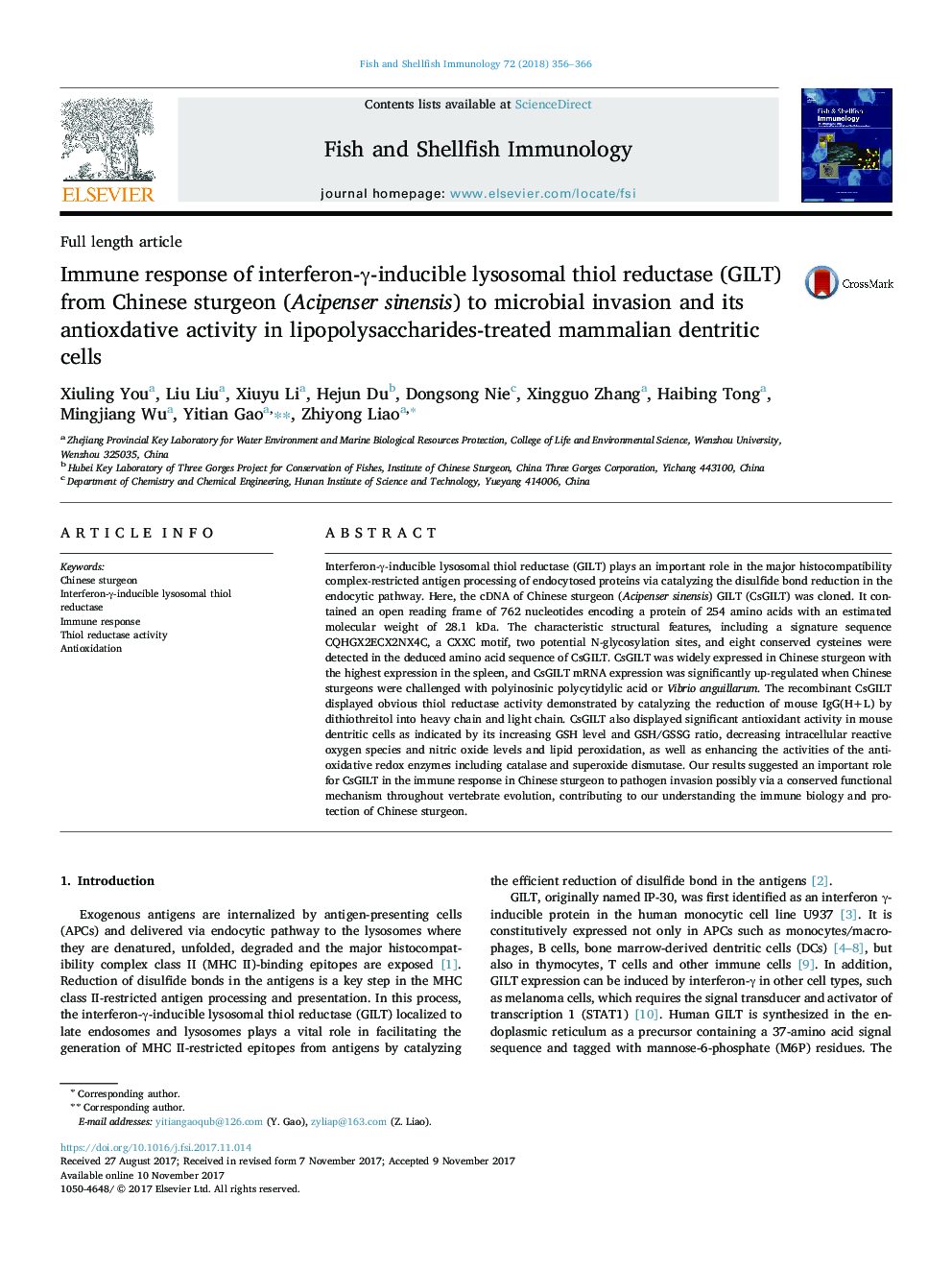| Article ID | Journal | Published Year | Pages | File Type |
|---|---|---|---|---|
| 8498876 | Fish & Shellfish Immunology | 2018 | 11 Pages |
Abstract
Interferon-γ-inducible lysosomal thiol reductase (GILT) plays an important role in the major histocompatibility complex-restricted antigen processing of endocytosed proteins via catalyzing the disulfide bond reduction in the endocytic pathway. Here, the cDNA of Chinese sturgeon (Acipenser sinensis) GILT (CsGILT) was cloned. It contained an open reading frame of 762 nucleotides encoding a protein of 254 amino acids with an estimated molecular weight of 28.1 kDa. The characteristic structural features, including a signature sequence CQHGX2ECX2NX4C, a CXXC motif, two potential N-glycosylation sites, and eight conserved cysteines were detected in the deduced amino acid sequence of CsGILT. CsGILT was widely expressed in Chinese sturgeon with the highest expression in the spleen, and CsGILT mRNA expression was significantly up-regulated when Chinese sturgeons were challenged with polyinosinic polycytidylic acid or Vibrio anguillarum. The recombinant CsGILT displayed obvious thiol reductase activity demonstrated by catalyzing the reduction of mouse IgG(H+L) by dithiothreitol into heavy chain and light chain. CsGILT also displayed significant antioxidant activity in mouse dentritic cells as indicated by its increasing GSH level and GSH/GSSG ratio, decreasing intracellular reactive oxygen species and nitric oxide levels and lipid peroxidation, as well as enhancing the activities of the antioxidative redox enzymes including catalase and superoxide dismutase. Our results suggested an important role for CsGILT in the immune response in Chinese sturgeon to pathogen invasion possibly via a conserved functional mechanism throughout vertebrate evolution, contributing to our understanding the immune biology and protection of Chinese sturgeon.
Related Topics
Life Sciences
Agricultural and Biological Sciences
Aquatic Science
Authors
Xiuling You, Liu Liu, Xiuyu Li, Hejun Du, Dongsong Nie, Xingguo Zhang, Haibing Tong, Mingjiang Wu, Yitian Gao, Zhiyong Liao,
